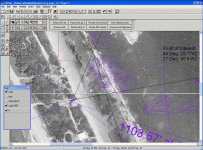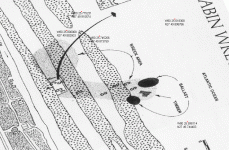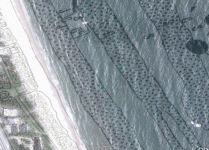Re: accounting for the 1715 fleet vessels by their own " offical records"
Goldminer... if possible i would like to georefference that 1966 or 67 chart that you displayed... you could then bring into goggle earth or most other mapping programs and get your GPS numbers from it....
I really do not hold alot of faith in the old mag map that Classen did.... they used inferior equipment and they really had no way to position themselves accurately. i have georeferenced his map and overlaid unto all of my data and to be honest it doesn't tell me anything we already didn't know. It might have been top of the line in the 60's but its garbage today.
The Hurricane map shown above i think greatly resembles how the storm came in... i have magged several of the wrecks now and they all have a similar u shape pattern to the debris trail.
Goldminer... if possible i would like to georefference that 1966 or 67 chart that you displayed... you could then bring into goggle earth or most other mapping programs and get your GPS numbers from it....
I really do not hold alot of faith in the old mag map that Classen did.... they used inferior equipment and they really had no way to position themselves accurately. i have georeferenced his map and overlaid unto all of my data and to be honest it doesn't tell me anything we already didn't know. It might have been top of the line in the 60's but its garbage today.
The Hurricane map shown above i think greatly resembles how the storm came in... i have magged several of the wrecks now and they all have a similar u shape pattern to the debris trail.









